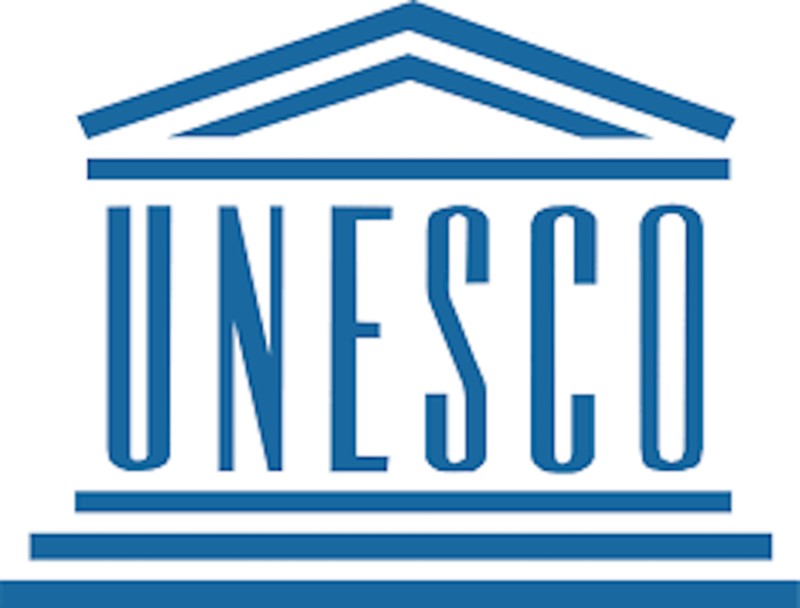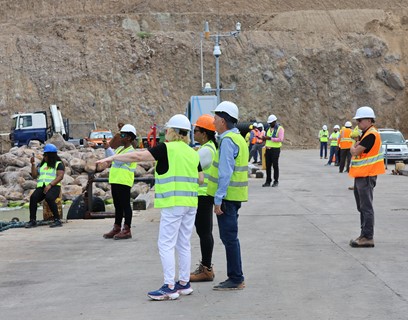
Paris, 27 November—The annual meeting of the Intergovernmental Committee for the Safeguarding of the Intangible Cultural Heritage will be held from 9 to 14 December in Bogota (Colombia), chaired by María Claudia López Sorzano, Secretary for Culture, Leisure and Sport of the City of Bogota. UNESCO Director-General Audrey Azoulay will be present at the opening.
The Committee, composed of representatives of 24 States Parties to the Convention for the Safeguarding of the Intangible Cultural Heritage (2003), meets once a year. It monitors the implementation of this international legal instrument, which has been ratified by 178 States.
The Committee meeting will also be an opportunity to celebrate the International Year of Indigenous Languages 2019, proclaimed by the United Nations. Thus, on the sidelines of debates, a UNESCO-curated sound exhibition will showcase the link between intangible cultural heritage and indigenous languages. A debate will also be held on the safeguarding of cultural heritage and indigenous languages through education.
During six days, the members of the Committee will review recent developments in the implementation of the Convention. In that context, the Committee will examine guidelines on how best to safeguard living heritage in emergency situations. The Committee will also pursue its reflection on ways to improve the participation of non-governmental organizations in the implementation of the Convention. As part of the follow-up of elements inscribed on the intangible cultural heritage lists, the Committee will raise the case of the Carnival of Alost (Belgium), inscribed on the Representative List of the Intangible Cultural Heritage in 2010.
The Committee will also have to decide on six requests for inscription on the List of Intangible Cultural Heritage in Need of Urgent Safeguarding and 41 requests for inscription on the Representative List of the Intangible Cultural Heritage of Humanity.
In addition, three projects are proposed for inclusion in the Register of Good Practices for the Safeguarding of the Intangible Cultural Heritage, which currently includes twenty projects. The Committee will also examine a request for international assistance by Burkina Faso with a view to implementing a national training and communication programme for the safeguarding of the intangible cultural heritage.
The List of Intangible Cultural Heritage in Need of Urgent Safeguarding identifies elements of living heritage whose sustainability is threatened. It has 59 elements inscribed to date and allows States Parties to the Convention to mobilize the international cooperation and assistance necessary to strengthen the transmission of these cultural practices in agreement with the communities concerned.
The Representative List of the Intangible Cultural Heritage of Humanity currently contains 429 inscribed elements. It aims to ensure greater visibility for the cultural practices and know-how carried by communities without recognizing standards of excellence or or exclusivity.
The Convention promotes the preservation of cultural practices or living expressions inherited from generation to generation, such as oral traditions, performing arts, social practices, rituals and festive events, knowledge and practices concerning nature and the universe or the knowledge and skills necessary for traditional crafts.
Six elements proposed for inscription on the List of Intangible Cultural Heritage in Need of Urgent Safeguarding:
- Spring rite of Jura≈≠ski Karahod – Belarus
- Seperu folkdance and associated practices – Botswana
- Tally in Upper Egypt – Egypt
- Rituals and practices associated with Kit Mikayi shrine – Kenya
- Sega tambour Chagos – Mauritius
- Buklog, thanksgiving ritual system of the Subanen – Philippines
The 41 elements proposed on the Representative List of the Intangible Cultural Heritage of Humanity:
- Armenian letter art and its cultural expressions – Armenia
- Transhumance, the seasonal droving of livestock along migratory routes in the Mediterranean and in the Alps – Austria, Greece, Italy
- Date palm, knowledge, skills, traditions and practices – Bahrain, Egypt, Iraq, Jordan, Kuwait, Mauritania, Morocco, Oman, Palestine, Saudi Arabia, Sudan, Tunisia, United Arab Emirates, Yemen
- Ommegang of Brussels, an annual historical procession and popular festival – Belgium
- The festival of the Santísima Trinidad del Señor Jesús del Gran Poder in the city of La Paz – Bolivia (Plurinational State of)
- Cultural Complex of Bumba-meu-boi from Maranhão – Brazil
- Nedelino two-part singing, an island with the monophonic sea of Rhodope songs – Bulgaria
- Morna, musical practice of Cabo Verde – Cabo Verde
- Byzantine chant – Cyprus, Greece
- Music and dance of Dominican Bachata – Dominican Republic
- Ethiopian epiphany – Ethiopia
- Alpinism – France, Italy, Switzerland
- Sowa-Rigpa, knowledge of healing or science of healing – India
- Traditions of Pencak Silat – Indonesia
- Traditional skills of crafting and playing Dotār РIran (Islamic Republic of)
- Provision of services and hospitality during the Arba'in visitation – Iraq
- Irish harping – Ireland
- Celestinian forgiveness celebration – Italy
- Ak-kalpak craftsmanship, traditional knowledge and skills in making and wearing Kyrgyz men’s headwear – Kyrgyzstan
- Fone Lam Vong Lao (lamvonglao) (lamvong) – Lao People’s Democratic Republic
- Silat – Malaysia
- Artisanal talavera of Puebla and Tlaxcala (Mexico) and ceramics of Talavera de la Reina and El Puente del Arzobispo (Spain) making process – Mexico, Spain
- Traditional technique of making Airag in Khokhuur and its associated customs – Mongolia
- Boka Navy, traditional maritime organization – Montenegro
- Gnawa – Morocco
- Kwagh-Hir theatrical performance – Nigeria
- Practice of traditional music and dance in Setesdal, playing, dancing and singing (stev/stevjing) – Norway
- ‘Hatajo de Negritos’ and ‘Hatajo de Pallitas' from the Peruvian south-central coastline – Peru
- Winter festivities, Carnival of Podence – Portugal
- 'Ie Samoa, fine mat and its cultural value – Samoa
- Moutya– Seychelles
- Drotárstvo, wire craft and art – Slovakia
- Holy Week processions in Mendrisio – Switzerland
- Practices and craftsmanship associated with the Damascene rose in Al-Mrah – Syrian Arab Republic
- Falak – Tajikistan
- Nuad Thai, traditional Thai massage – Thailand
- Traditional Turkish archery – Turkey
- Traditional turkmen carpet making art in Turkmenistan – Turkmenistan
- Tradition of Kosiv painted ceramics – Ukraine
- Khorazm dance, Lazgi – Uzbekistan
- Practices of Then by Tày, Nùng and Thái ethnic groups in Viet Nam – Viet Nam
The three candidates for the Register of Good Practices for the Safeguarding of the Intangible Cultural Heritage:
- Safeguarding strategy of traditional crafts for peace building – Colombia
- Ecological and cultural programme associated with the Armila Sea Turtle Festival– Panama
- Biocultural programme for the safeguarding of the tradition of the Blessed Palm in Venezuela – (Bolivarian Republic of Venezuela)
Request for International Assistanace:
- Capacity building for stakeholders involved in safeguarding the intangible cultural heritage in Burkina Faso – Burkina Faso


